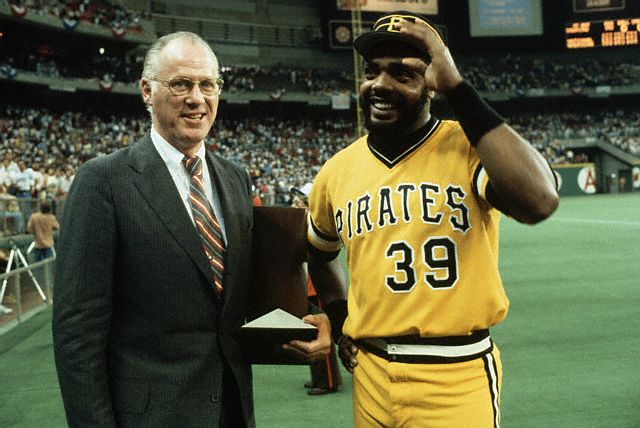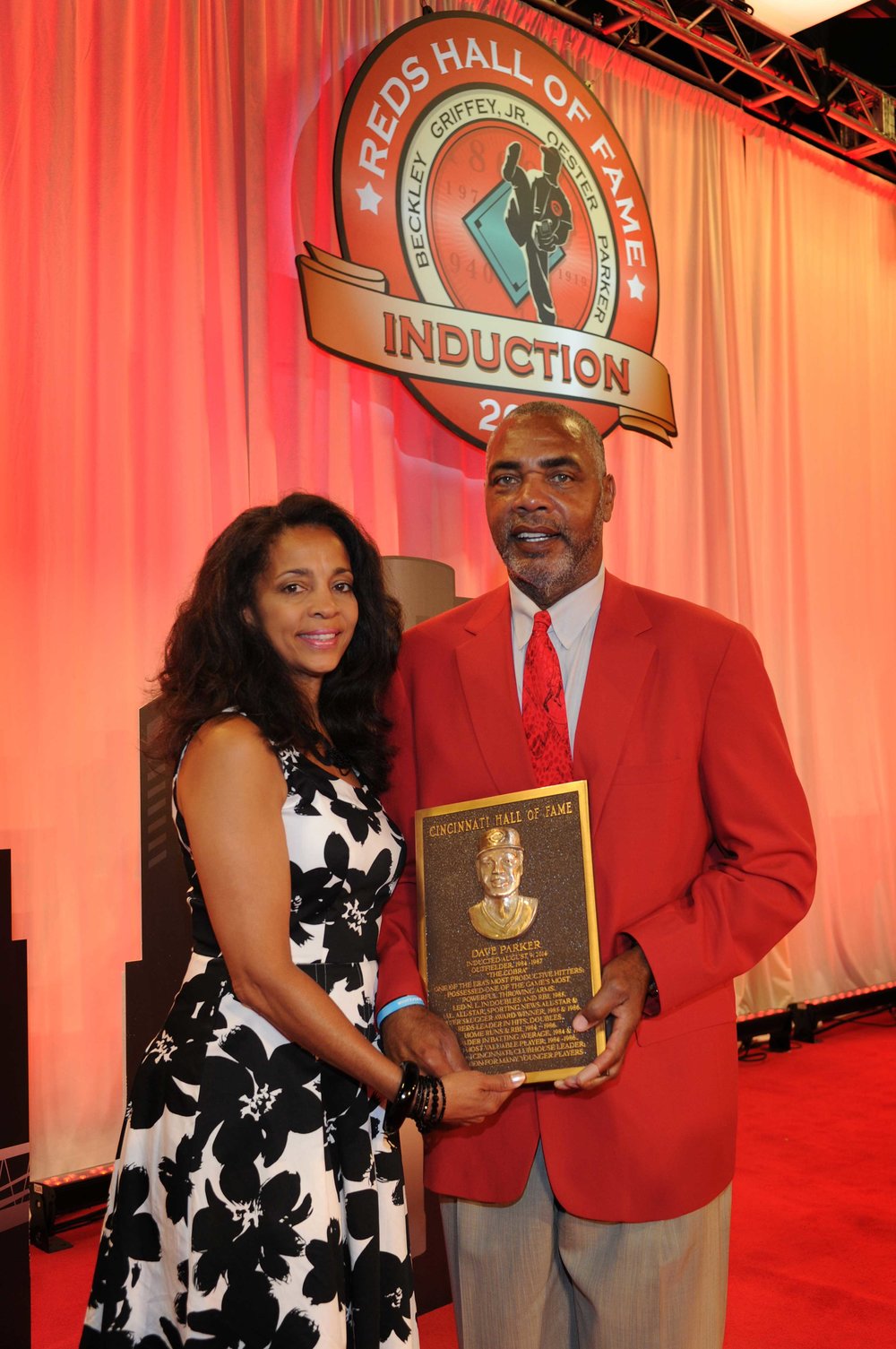CINCINNATI, Ohio - The line was drawn three months prior, and Dave Parker responded when Jim Rice sought an advantage in the Major League All Star Game played in Seattle’s Kingdom 40 years ago.
Earlier in 1979, Parker and Rice — standing back to back — graced the cover of Sports Illustrated with the headline “Who’s Best?” They were considered the top two players in the game.
Rice, the Boston left fielder, is pictured looking over his shoulder and up at the much taller Parker, the Pittsburgh right fielder who was grinning at the camera.
“In the photo, I held up my [index] finger to let him know he didn’t stand a chance,'' Parker, smiling at the memory, said in a recent interview with The Plain Dealer.
But the competition began before the cover photo shoot. Rice started things off at the introduction.
“He wore some playoff and all-star rings and squeezed my hand really hard,” said Parker. “I told him, ‘I’m going to punch you in the head if you shake my hand like that again.'"
Not only did Parker avenge Rice’s vice grip, but his defensive display in 1979 earned him the All-Star Game’s Most Valuable Player Award and helped establish him as one of the best players of that era. It was the first time an outfielder had two assists in an All-Star game, and it wouldn’t happen again until Tony Gwynn did it in 1992.
Parker also is the only position player to win the award mainly because of his defense. He also wasn’t too shabby at the plate that day. He singled, was intentionally walked and drove in a run on a sacrifice fly.
‘Cobra’ still on the prowl
Parker, 68, doesn’t move as swift as he once did in right field. "The Cobra,'' as he was known in his playing days, had two knee surgeries and was diagnosed in 2012 with Parkinson’s Disease, which attacks the brain nerve cells and affects movement. Parker fights the disease daily with exercise and medication.
Some days are good and some days are a challenge for Parker who remains busy as a volunteer at the Cincinnati Reds Urban Youth Academy. It’s across the street from his residence.
Parker, who grew up in Cincinnati and played four years with the Reds, teaches young baseball players the fundamentals of the game.
Parker and his wife, Kellye, are also devoted to theDaveParker39Foundation, which raises money to assist Parkinson’s awareness and programs.
“I’d like to find a cure,” Parker said. “My foundation was created to bring attention to the disease and help fund research.”
Generating attention has been routine for Parker. He’s well equipped to stir awareness for Parkinson’s. His history of memorable performances, particularly the 1979 All-Star Game, is a prime example of Parker rising to the occasion.
“I went into that All-Star game with the attitude of playing hard and the chance to show my talent,” Parker said. “I wanted to be the guy that no one wanted to run against and I wanted to be the guy that would hit . . . I wanted to be number one.”
The Game
All-Star play during those days was more than a midsummer exhibition game. Competition between the two leagues did not have to be manufactured like the rule where the winner of the game (from 2003-2016) determined which league had home field advantage in the World Series.
The competition was so intense that the National League defeated the American League in 1970 when Pete Rose collided into Indians catcher Ray Fosse for the winning run in the 12th inning.
“In the pregame meeting in those days, National League president Warren Giles’ veins would pop out in his head as he told us this game was our chance to show the world the National League was superior,” Rose told The Plain Dealer.
Parker felt it, too.
“We went into those games with the attitude that we were going to kick their butts,” said Parker, who played in six All-Star Games and hit a home run in the 1981 game in Cleveland.
The National League came into 1979 game with seven straight wins and 15 out of the last 16.

Dave Parker accepting the All-Star Game MVP award from Bowie Kuhn
The laser from foul territory
In the seventh inning, with the AL ahead, 6-5, Rice hit a ball to shallow right field. Parker charged and overran the ball. Rice, already at second, went for third.
Wrong move.
Parker recovered, retrieved the ball after a high bounce in and threw a one-hop laser from foul territory to Los Angeles Dodgers third baseman Ron Cey, who easily tagged Rice out.
“Parker made a great throw and I wasn’t surprised because I knew he had a terrific arm,” Cey said.
Speed was never Rice’s strength. He had a career-high 10 stolen bases in 1975, but his attempt at third did not surprise Parker.
“I knew Jimmy was going to run because he’s a competitive guy,” Parker said. “But I got a lot of satisfaction nailing him at third. Jimmy and I go way back.”
Nailing Rice at third
Lee Mazzilli’s solo homer tied the score in the eighth. The AL threatened in its half of the inning behind Brian Downing’s leadoff single. He moved to second on a sacrifice bunt and an intentional walk put two runners on with one out.
Enter left-handed batter Graig Nettles .
“I said ‘Oh [expletive],’ because Parker’s in shallow right field and I knew Nettles would hit the ball to right field, and that wasn’t good,” Downing said.
Right on cue, Nettles popped a one-hop single to right field. Parker charged, caught the ball on a short hop and fired a rope to catcher Gary Carter.
“Parker wasn’t playing that deep and I figured the play home was going to be ugly,” Downing said. “I planned to slide way inside and reach that front tip of the plate."
Carter took the throw on the third base side of the plate. Downing made his slide but Carter’s block and tag completed the incredible play.
“If the throw was just several inches higher or to the other side, I would’ve been safe,” Downing said.
Rose, who watched the play from first base, pointed out the short dimensions [316 feet] in right field.
“Dave had a great arm and his arm looked even better in Seattle because right field isn’t that deep,” Rose said. “But he would’ve thrown those guys out no matter which stadium we were in.”
Joe Morgan scored on a bases-loaded walk in the top of the ninth and the NL won the All-Star Game, 7-6.
This wasn’t the first time Parker’s arm was on display in an All-Star Game, well, sort of. In the 1977 Game at Yankee Stadium, Parker and a collection of golden arms - Ellis Valentine, Dave Winfield and Reggie Smith - put on a show during pregame.
“That was the best contest I’ve been in as far as arms,” said Parker, who won the 1985 Home Run Derby. “Reggie Smith had the strongest arm. He threw balls that exploded. I was probably the most accurate. I had a quick release - scoop it up, take it to may hand and get it off.”

Dave Parker with wife, Kellye, at Reds Hall of Fame Gala, 2014
Hall of Famer?
Winning the All-Star Game MVP was just the start of Parker’s accomplishments that season. He won a Gold Glove and contributed to the “We Are Family” Pirates’ World Series triumph, beating the Baltimore Orioles in seven games.
Parker ended his 19-year career with a .290 batting average, 2,712 hits, 339 home runs and 1,493 RBI. He was a seven-time All-Star, three-time Gold Glove winner and a three-time Silver Slugger Award winner and two-time NL batting champion. He was the National League MVP in 1978.
His 26 assists in 1977 are still the most by any outfielder in a season since Roberto Clemente’s 27 in ’61.
He also was the first professional athlete to average $1 million a year when he signed a five-year, $5 million contract with the Pirates in January 1979.
Those numbers have not been enough for induction into the Baseball Hall of Fame. His most votes was in 1998, his second year on the ballot, when he received 116 votes, well short of the 355 needed for election. He was considered by the Modern Baseball Era Committee in 2017, but was not elected.
Parker has been inducted into the Cincinnati Reds Hall of Fame and the Negro Leagues Baseball Museum’s “Hall of Game,” which honors former baseball greats who competed with the same passion, determination, skill and flair exhibited by the heroes of the Negro Leagues.



No comments:
Post a Comment